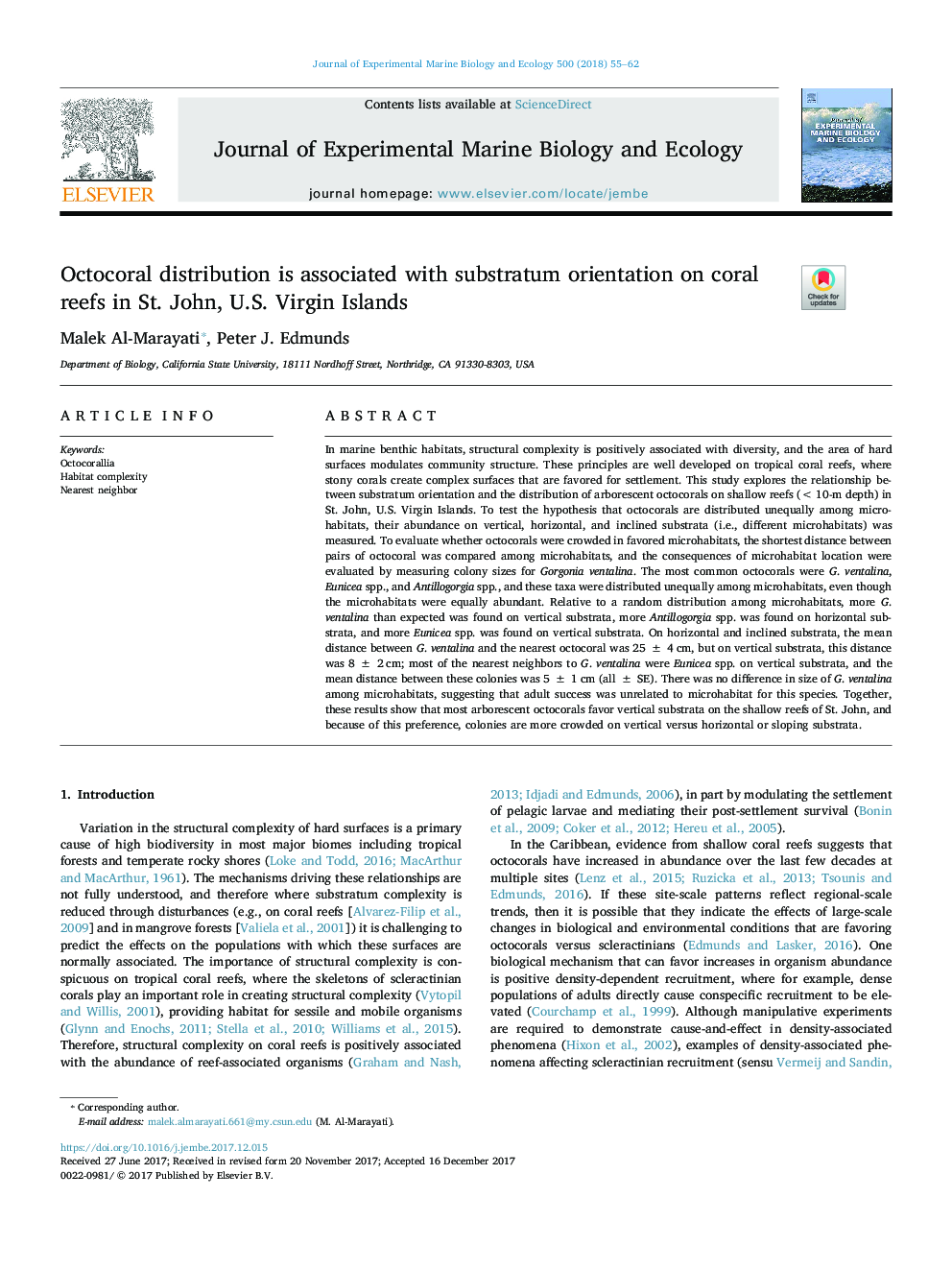| Article ID | Journal | Published Year | Pages | File Type |
|---|---|---|---|---|
| 8849000 | Journal of Experimental Marine Biology and Ecology | 2018 | 8 Pages |
Abstract
In marine benthic habitats, structural complexity is positively associated with diversity, and the area of hard surfaces modulates community structure. These principles are well developed on tropical coral reefs, where stony corals create complex surfaces that are favored for settlement. This study explores the relationship between substratum orientation and the distribution of arborescent octocorals on shallow reefs (< 10-m depth) in St. John, U.S. Virgin Islands. To test the hypothesis that octocorals are distributed unequally among microhabitats, their abundance on vertical, horizontal, and inclined substrata (i.e., different microhabitats) was measured. To evaluate whether octocorals were crowded in favored microhabitats, the shortest distance between pairs of octocoral was compared among microhabitats, and the consequences of microhabitat location were evaluated by measuring colony sizes for Gorgonia ventalina. The most common octocorals were G. ventalina, Eunicea spp., and Antillogorgia spp., and these taxa were distributed unequally among microhabitats, even though the microhabitats were equally abundant. Relative to a random distribution among microhabitats, more G. ventalina than expected was found on vertical substrata, more Antillogorgia spp. was found on horizontal substrata, and more Eunicea spp. was found on vertical substrata. On horizontal and inclined substrata, the mean distance between G. ventalina and the nearest octocoral was 25 ± 4 cm, but on vertical substrata, this distance was 8 ± 2 cm; most of the nearest neighbors to G. ventalina were Eunicea spp. on vertical substrata, and the mean distance between these colonies was 5 ± 1 cm (all ± SE). There was no difference in size of G. ventalina among microhabitats, suggesting that adult success was unrelated to microhabitat for this species. Together, these results show that most arborescent octocorals favor vertical substrata on the shallow reefs of St. John, and because of this preference, colonies are more crowded on vertical versus horizontal or sloping substrata.
Related Topics
Life Sciences
Agricultural and Biological Sciences
Aquatic Science
Authors
Malek Al-Marayati, Peter J. Edmunds,
